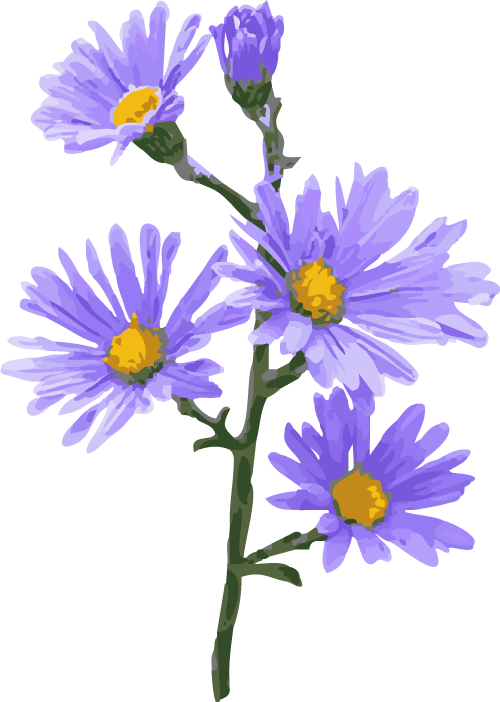Information on this page is for customers in
{{ town-name }}
Planting Guidance for Native Plants
Native plants are trees, shrubs, flowers and other plants that occur naturally in a particular region.
They play a critical role in supporting wildlife habitats and provide food and shelter for insects, birds, reptiles, amphibians and mammals, contributing to the overall health and stability of ecosystems. Native plants help conserve water and soil by requiring less maintenance and being better adapted to local climate conditions.
Planting native plants is a practical and eco-friendly way to create beautiful landscapes while supporting the local environment.
Which type of plant are you looking for?
Our arborists are passionate about plants and the positive impact they can have on the environment. Select the type of plant you're looking for to see our recommendations.
Anise Hyssop

Lavender flowers, blooms in summer, full sun/partial shade
Bearberry

Pink and white flowers in spring, brilliant red fruit in winter, full sun
Black Eyed Susan

Large yellow flowers that pollinators love, songbirds feast on the seeds, full sun
Butterfly Weed

Red-orange summer flowers, long-lived, full sun
Foamflower

Groundcover with white star-shaped flowers, likes moist soil, partial sun/shade
New England Aster
 Attracts bees and butterflies, ranges from deep purple to pink, likes the sun
Attracts bees and butterflies, ranges from deep purple to pink, likes the sun
Shrubby St. John’s Wort

Bright yellow flowers, adapts to a wide range of soil types, full/partial shade
Smooth Blue Aster

Butterflies love it, easy to grow with late season flowers and likes sun
Sweet Goldenrod

Drought tolerant, likes the sun
Wild Anemone

Give plenty of space as it will spread, white flowers with yellow, full/partial sun
Wild Beebalm

Aromatic foliage, pink flowers, full/partial sun
Wild Lupine

Pale blue to purple flowers, larval host for Karner Blue butterfly (among others) and likes full/partial sun
Woodland Sunflower
 Flowers and seeds feed butterflies and birds, enjoys partial sun/shade
Flowers and seeds feed butterflies and birds, enjoys partial sun/shade
Allegheny Serviceberry

Woodland plant, excellent tasting fruit, partial sun/shade
American Mountain-Ash
 Long compound leaves with very narrow leaflets, birds love the bright red fruit, sun and shade tolerant
Long compound leaves with very narrow leaflets, birds love the bright red fruit, sun and shade tolerant
Bear Oak

Thick leathery leaves, drought tolerant, full sun
Gray Alder

Handles wet soil, good for birds, full sun/partial shade
Red Buckeye

Reddish flowers attract hummingbirds and pollinators, full sun
Black Elderberry
 Great landscape shrub, flowers and fruits are very popular, full sun/partial shade
Great landscape shrub, flowers and fruits are very popular, full sun/partial shade
Carolina Rose
 Pink flowers, liked by butterflies and bees, full sun
Pink flowers, liked by butterflies and bees, full sun
Highbush Blueberry
 Highly desirable, beautiful fall color, moist soil, full sun
Highly desirable, beautiful fall color, moist soil, full sun
Mountain Laurel
 Flowers that release pollen easily, full sun/partial shade
Flowers that release pollen easily, full sun/partial shade
Northern Spicebush
 Early yellow flowers, leaves are very fragrant when crushed, partial sun/shade
Early yellow flowers, leaves are very fragrant when crushed, partial sun/shade
Northernbush Honeysuckle
 Bumblebees love it, partial sun/shade
Bumblebees love it, partial sun/shade
Pussy Willow
 The earliest source for pollinators, wet to normal soil, sun
The earliest source for pollinators, wet to normal soil, sun
Rosebay Rhododendron
 Very thick leathery evergreen leaves, pinkish to white flowers, understory plant but can handle sun
Very thick leathery evergreen leaves, pinkish to white flowers, understory plant but can handle sun
Sweetbay Magnolia
 Semi-evergreen, large flowers in spring, prefers sun but will do okay in some shade
Semi-evergreen, large flowers in spring, prefers sun but will do okay in some shade
Twig Dogwood
 Red twigs, handles wet areas very well, full sun/partial shade
Red twigs, handles wet areas very well, full sun/partial shade
White Meadowsweet
 White flowers, needs constant moisture, full sun
White flowers, needs constant moisture, full sun
Winterberry Holly
 Red berries during winter provide sustenance, can colonize, full sun/partial shade
Red berries during winter provide sustenance, can colonize, full sun/partial shade
Landscaping with native plants guide
Learn more about these utility-compatible New England native plants' sizes, characteristics, preferred sun exposure and more in our planting guide.